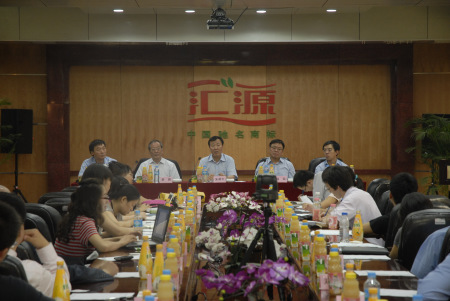在大厅的水晶吊灯下,尼泊尔的毛派正召开会议。加德满都前王宫之一的这间大厅里座无虚席。王宫外面的马路上到处都是汽车,人们急匆匆的赶来参加这次会议。
极左翼的政治局委员坐在一面巨大红旗之下。正中间是普斯帕•卡马尔•达哈尔(Puspa Kamal Dahal),他曾经当过教师,人们更熟悉他的化名:普拉昌达(Prachanda),他正决心问鼎尼泊尔下任总理一职。
走廊的两侧悬挂着描述这个喜玛拉雅前印度教王国昔日的画像:猎虎探险;身穿红色立领长衫、头戴羽毛头饰的王室家族;带着看上去不舒服的维多利亚时代王冠的强悍的王后。
经历了10年天翻地覆的变化(期间尼泊尔推翻了君主制)后,这个摇摇晃晃的共和国正进入一个步履蹒跚的和平进程,这一进程让毛派武装分子进入政治主流,同时伴随着经济增速不断下滑以及对脆弱银行体系的担忧。
印度传统上对尼泊尔影响深远
同时改变的还有这个人口近3000万的共和国与庞大且增长迅速的邻国印度之间一度亲密的关系。印度政府对这个被陆地包围的山国的影响力曾经是深远的。上世纪50年代,印度帮助尼泊尔引入民主,并曾支持毛派与独裁君主制斗争。用尼泊尔政治分析人士的话来说,从在尼泊尔拥有的权力来看,印度驻加德满都大使就像是尼泊尔的“第二位国王”。
这样的时光不会再有了。如今,在尼泊尔年轻人中,印度已不再受欢迎,而普拉昌达领导的毛派政党公开敌视印度政府。经济不对称正在扩大,印度的增速接近9%,而尼泊尔则徘徊在3%。
两国甚至不通铁路。修建越过喜玛拉雅山脉的公路和电厂的不是印度人,而是中国的承包商。中国政府计划在邻近尼泊尔边境的西藏日喀则兴建一个大型内陆港,为南亚的贸易提供便利。汇款是尼泊尔经济的支柱,因为尼泊尔人会到海湾地区、伊拉克、阿富汗和马来西亚工作。
印度与尼泊尔的关系,展现了一个令印度决策者感到困惑和失望的难题:这个全球人口最多的民主国家经济实力的日益增强,与该国将这种实力转化为地缘政治影响力(特别是在南亚)的能力出现了脱节。
中国解决了很多长期存在的边境纠纷
相比之下,过去10年,中国——亚洲另一个新兴经济大国——已做出巨大努力,改善与邻国的关系。中国解决了很多长期存在的边境纠纷,对基础设施进行巨额投资,并提供贸易优惠。
然而,中国与某些邻国的紧张局势已升级,特别是一些国家认为,中国对待南海领土争议的方式越来越武断。
相对于更有活力的东亚市场,缺乏地区凝聚力将令南亚处于经济劣势。
这也给印度带来了巨大安全风险,最重要的是来自中国的风险。未来几十年,中印可能会围绕地区主导地位展开角逐。退役将军、受到尊敬的安全问题分析师阿肖克•梅赫塔(Ashok Mehta)表示,如果中国有一天控制了尼泊尔喜玛拉雅山脉的高地,那么它就不需要把核武器对准印度了。他把尼泊尔视为一个战略关键地区,失去它将让印度付出巨大代价。
与难以驾驭的邻国长期不和,正困扰着印度政府。印度总理曼莫汉•辛格(Manmohan Singh)努力与拥有核武的巴基斯坦交好;在摆脱英国殖民统治后的63年里,印度与巴基斯坦共打过3次战争。他支持对该地区的安全僵局采取开放态度。他还寻求与孟加拉总理谢赫•哈西娜(Sheikh Hasina)领导的新文职政府加强合作,并与斯里兰卡总统马欣达•拉贾帕克萨(Mahinda Rajapaksa)进行对话。
他表示:“尽最大努力实现与印度邻国关系正常化,是我们的责任。我一直相信,这对实现我国的发展潜力不可或缺。”
要做到这点,辛格需要带头努力,逆转邻国的不稳定和经济疲弱,并重新修复英属印度所属区域丧失的统一,这一区域曾经从科伦坡延伸到喀布尔再到仰光。
巴基斯坦经济曾多年领先印度
几十年来,在这个以极度贫困闻名的地区,印度经济一直处于落后地位,每年增长3%,政治不信任、薄弱的基础设施和跨境繁琐手续都限制了贸易的发展。在几十年期间,自由化的巴基斯坦经济表现超过其规模更大的南部邻国。从1947年(英国结束殖民统治,印度和巴基斯坦独立)至1990年,巴基斯坦的平均增长率为5.5%。过去20年,这一领先优势慢慢消失,如今,两国的差距变得更为明显。
巴基斯坦前财长伯克(Shahid Javed Burki)表示:“过去,(巴基斯坦)增长显著。如今,我们看到的是低迷。”
“巴基斯坦需要改变(竞争姿态),与印度在多个领域合作。巴基斯坦必须意识到,印度是南亚的龙头经济体。”
伯克敦促印度政府将目光投向邻国寻求贸易合作,而不是寻求与东盟(ASEAN)成员国和欧洲建立“远距离的关系”。
今天,印度强劲的经济正把邻国甩在后面,而不是拉动它们一起增长。预计,印度经济今年将增长8.5%,这一增长率是尼泊尔和缅甸的两倍;巴基斯坦的增长率不超过4%;只有刚摆脱军事统治的孟加拉国和正从长期内战中复元的斯里兰卡仍紧跟印度的脚步,这两国的增长率将达到6%。
在这些邻国中,人们认为孟加拉国与印度改善关系的前景最为乐观。在那里,人们对孟加拉的认同感非常强烈;与巴基斯坦相比,孟加拉国穆斯林的宗教原教旨主义倾向相对较弱;哈西娜女士则被认为是印度的一个盟友。
印度充分利用了其与阿富汗的历史纽带
不丹与印度关系的前景也令人乐观,这个幅员很小、民风淳朴的山地君主国,喜欢用幸福感而不是国内生产总值(GDP)来衡量本国的发展;另外还有阿富汗,新德里充分利用了自己与喀布尔的历史纽带,还拨出10亿美元援助预算来支持阿富汗的重建努力。
与此形成反差的是,人们认为巴基斯坦、斯里兰卡和军政府统治的缅甸在更大程度上受到中国的左右。中国在南亚的影响力令印度备感担忧。
印度最需改善的,是与巴基斯坦及该国1.8亿国民的关系,但这方面的进展极为有限。这两个邻国之间的双边贸易额少得可怜。十年前,双边贸易额为2.51亿美元,现在则接近20亿美元。但如果印巴两国能够加强在能源、信息技术和农业方面的合作,双边贸易额可能会比现在高得多。
相比之下,印中两国的双边贸易额今年有望达到600亿美元。但在双边贸易额快速增长的同时,两国间也出现了保护主义对立。
印度外交秘书尼鲁帕玛•拉奥(Nirupama Rao)表示:“我们的邻国不应负面看待印度的崛起。我们高速增长的经济和巨大的市场应被视为一个增长机遇:一个投资、技术和企业家资源的可靠来源,同时也是我们邻国出口商品的一个迅速扩张的市场。”
但她表示,南亚地区的经济一体化已因各方的政治敌意而陷入“困境”。区域内相互出口仅占该地区总出口的5%,区域内电信流量也不高——尽管印度是全球增长最快的移动市场之一,而Bharti Airtel等公司又正在孟加拉国和斯里兰卡进行投资。
加强印度外交部的压力
与邻国修复关系的紧迫性,正在印度国内形成压力,要求提高外交部的地位并提升该部的外交技巧。在国际社会和印度本国外交界看来,印度外交部过于薄弱,与该国的规模和雄心不相称。
拉奥的抱怨既针对北部邻国巴基斯坦,也针对南部邻国斯里兰卡。斯里兰卡比印度小得多,该国政府不信任新德里。而印度南部泰米尔纳德邦的政客也一直对斯里兰卡泰米尔少数民族争取更大自治权的斗争持同情态度,从而阻止新德里与科伦坡建立更融洽的关系。
斯里兰卡与中国关系日趋紧密,这在印度国内引发了越来越大的猜疑。去年,中国向斯里兰卡提供了12亿美元资金,成为该国最大的外资来源国。它还向斯里兰卡提供军事援助,并帮助该国建设大型基础设施项目,包括机场、公路和位于该国南部汉班托特的一个海港。
新德里智囊机构——政策研究中心(Centre for Policy Research)的布拉马•切拉尼(Brahma Chellaney)教授表示:“中国战略性进入斯里兰卡的能力损害了印度的利益。”
在尼泊尔,印度的影响力正在减弱,但这未必是中国影响力增强所致。尼泊尔央行行长尤瓦•拉杰•卡蒂瓦达(Yuva Raj Khatiwada)抱怨不对称局面越来越严重,尽管在事实上,尼泊尔60%的对外贸易额来自对印贸易。
卡蒂瓦达表示,这种不均衡使得尼泊尔难以在新德里上调利率之时,管理盯住印度卢比的本币。尽管尼泊尔以往曾推行经济自由化,但在某些方面存在结构性劣势:科技、交通网络、工会好斗性和电力短缺。
尼泊尔乱局可能殃及印度
反过来,印度则担心,尼泊尔政治乱局和糟糕的经济表现,会危及毗邻该国的比哈尔邦的经济复苏。比哈尔邦是印度最贫穷的邦之一。该邦首席部长尼蒂什•库马尔(Nitish Kumar)改写了该邦糟糕的增长纪录,让这块被许多人遗忘的印度国土实现了11%增长。
在政治方面,另一件让新德里政策制定者发愁的事情是,毛派势力正在尼泊尔和印度境内同时崛起,印度内政部认为这两者之间存在联系。
印中两国均对尼泊尔的乱局感到不安。这两个全球增长最快的大型经济体,均不希望在本国边境上出现由毛派引发的不稳定和贫穷。尽管尼泊尔人的反印情绪正在升温,但他们还远远谈不上亲中。
加德满都人头济济的毛派会议大厅,提醒人们注意印度面前的挑战的紧迫性。如果印度不能加强区域联系,它就注定会看到,自己的经济扩张被冷漠而充满敌意的邻国所遏制。中国在亚洲的经济崛起也会因新德里影响力的萎缩而加快。如果情况正好相反,即印度拉动邻国一起走向日益繁荣,那么它将朝着自己的目标迈进一大步——即经济增长率达到10%,赶上中国。
译者/何黎
http://www.ftchinese.com/story/001033716
Under the ballroom's crystal chandeliers, Nepal's Maoists are holding court. The cavernous room in one of Kathmandu's former palaces is packed; outside the roads are choked with cars hurrying people to the gathering.
Members of the ultra-left politburo sit under a big red banner. In the middle is Puspa Kamal Dahal – a former teacher better known by his nom de guerre, Prachanda – the man making an aggressive bid to become Nepal's next prime minister.
Lining the corridors are portraits of the old days of the Himalayan former Hindu kingdom – tiger-hunting expeditions; royal households in red tunics and plumed headgear; and doughty queens in uncomfortable-looking Victorian-era regalia.
Following a decade of radical change in which Nepal overthrew its monarchy, the tottering republic is engaged in a halting peace process that has brought Maoist militants into the political mainstream, accompanied by falling economic growth rates and anxieties about a fragile banking system.
Altered, too, is the once umbilical relationship between the republic of close to 30m people, and its large, fast-growing neighbour, India. New Delhi's influence over the landlocked mountain state was far-reaching. It helped bring in democracy in the 1950s, and at one time backed Maoists in the struggle against an autocratic monarchy. In the words of one Nepalese political analyst, India's ambassador to Kathmandu was like the “second king” in terms of his local power.
Not any more. India has grown unpopular among young Nepalis, and Prachanda's Maoist party is openly hostile to New Delhi. Economic asymmetries are widening, as India grows at nearly 9 per cent, while Nepal languishes at 3 per cent.
The two countries do not even share a rail link. It is Chinese contractors, rather than Indian, who are building highways across the Himalayas and power plants. Beijing has plans for a large inland port at Xigaze in Tibet, on Nepal's border, to facilitate trade in south Asia. Remittances are the mainstay of the economy as Nepalis travel to the Gulf, Iraq, Afghanistan and Malaysia for work.
The relationship with Nepal illustrates a dilemma that puzzles and frustrates policymakers in New Delhi: the mismatch between the growing economic power of the world's biggest democracy, and its ability to convert this into geopolitical influence, particularly across south Asia.
By comparison, China – Asia's other great emerging economic power – has made huge efforts to improve relations with its neighbours during the past decade, settling a number long-running border disputes, making large investments in infrastructure and offering preferential trade terms.
Tensions between China and some of its neighbours have increased, however, especially over what some countries see as Beijing's increasingly assertive approach to territorial disputes in the South China Sea.
A lack of regional cohesion will put the area at an economic disadvantage to the more dynamic markets of east Asia.
It also poses big security risks for India, most importantly from China, in what is likely to become a tussle for regional dominance in the coming decades. Ashok Mehta, a retired general and respected security analyst, says that if China one day controlled the heights of the Himalayas in Nepal, it would have no need of a nuclear arsenal trained on India. He views the country as a strategic linchpin whose loss would cost New Delhi dearly.
Long-term difficulties with unruly neighbours worry New Delhi. Manmohan Singh, prime minister, has made efforts to engage Pakistan, a nuclear-armed power with which the country has fought three wars in 63 years since independence from British rule. He favours openness over a security lockdown in the region. He has also sought greater engagement with Bangladesh's new civilian government under Prime Minister Sheikh Hasina, and a dialogue with President Mahinda Rajapaksa of Sri Lanka.
“It is our obligation to make every effort to normalise relations with India's neighbours. That is essential, I have always believed, to realise the development potential of our country,” he says.
To do that, Mr Singh will need to lead efforts to reverse the instability and economic weakness beyond his borders, and restitch the unity lost among the constituent parts of British India that once stretched from Colombo to Kabul to Rangoon.
For decades, India's economy, growing at 3 per cent a year, was a laggard in a region notorious for deep poverty, and where a combination of political mistrust, poor infrastructure and crossborder red tape restricted trade. For decades a liberalising Pakistan outperformed its bigger southern neighbour with average growth rates of 5.5 per cent between 1947, when partition formed the two countries at the end of British rule, and 1990. During the past two decades the lead has evaporated, and asymmetries are becoming more pronounced.
Former Pakistani finance minister Shahid Javed Burki says: “There has been remarkable growth [in Pakistan] in the past. What we are seeing today is a downturn.
“Pakistan needs to change its [competitive stance] to collaborate with India in many areas. Pakistan has to realise that India is south Asia's anchor economy.”
Mr Burki urges New Delhi to look to its neighbours for trade partnership rather than to “distant relationships” with Association of South East Asian Nations members and Europe.
Today India's strong economy, which is forecast to grow by 8.5 per cent this year, is outstripping those of its neighbours rather than pulling them with it. The growth rate is double that of Nepal and Burma. Pakistan's growth is no more than 4 per cent. With 6 per cent growth, only Bangladesh, emerging from military rule, and Sri Lanka, recovering from a long civil war, remain close.
Of those, Bangladesh is viewed as offering the best prospects for improving relations. There, a shared Bengali identity runs deep, the Muslim population is less prone to religious fundamentalism than that of Pakistan and Ms Hasina is regarded as an ally of India.
Also promising are Bhutan, a tiny benign mountain monarchy that likes to measure its progress in terms of happiness rather than gross domestic product; and Afghanistan, where New Delhi makes a great deal of its historic links to Kabul, and has backed a reconstruction effort with a $1bn aid budget.
In contrast, Pakistan, Sri Lanka and military-ruled Burma are judged to have fallen more under the sway of China, whose interference in south Asia India fears.
Relations with Pakistan, and its 180m people, are where improvement is most needed but where progress is most elusive. Bilateral trade between the neighbours is paltry. Ten years ago, it was just $251m. It now stands close to $2bn but has the potential to be much higher if energy, information technology and agricultural partnerships were to flourish.
By comparison, India's bilateral trade with China is expected to reach $60bn this year. But with fast growth have come protectionist rivalries.
“India's rise should not be seen in . . . negative terms by our neighbours,” says Nirupama Rao, foreign secretary. “Our fast-growing economy and large market should be seen as a growth opportunity: a reliable source for investments, technology and entrepreneurial resources, besides being a rapidly expanding market for our neighbours' exports.”
But, she says, economic integration across south Asia has been “stymied” by political enmity. Intra-regional exports are only 5 per cent of the region's total exports. Even telecommunications traffic within the region is low, in spite of the fact that India is one of the fastest-growing mobile markets in the world, and companies such as Bharti Airtel are making investments in Bangladesh and Sri Lanka.
The need to mend relations with neighbours is creating internal pressure to increase the ranks and upgrade the skills of a ministry seen internationally and among India's own diplomatic corps as far too thin for a country of its size and ambitions.
Ms Rao's complaint applies as much to Sri Lanka to the south as it does Pakistan to the north. Colombo, dwarfed by its mainland neighbour, distrusts New Delhi. India has also been held back from building warmer relations with Colombo by politicians in its southern state of Tamil Nadu, where politicians were sympathetic to the Tamil minority's fight for greater autonomy.
Suspicion is growing in India of an increasingly close relationship between Colombo and China. Beijing became Sri Lanka's biggest source of foreign funding last year, providing $1.2bn. It has provided military aid and is helping to build big infrastructure projects, including an airport, roads and a sea port at Hambantota on the south of the island.
“China's ability to make the strategic inroads into Sri Lanka has been at India's expense,” says Professor Brahma Chellaney of the Centre for Policy Research, a New Delhi think-tank.
In Nepal, India's embrace is weakening without much need for Chinese influence. Yuva Raj Khatiwada, central bank chief, complains of a growing asymmetry, in spite of the fact that his country relies on India for 60 per cent of its trade.
He says the disparities make it hard to manage a currency pegged to the Indian rupee at a time when New Delhi is raising interest rates. In spite of past liberalisation of the economy, Nepal is at a structural disadvantage in terms of technology, transport links, trade union militancy and power shortages.
India, in turn, fears that political confusion and poor economic performance in Nepal will threaten the economic recovery in the neighbouring state of Bihar, one of its poorest. There Nitish Kumar, chief minister, has defied the state's dismal record to deliver 11 per cent growth in a part of India that many considered lost.
On the political front, another factor worrying policymakers in New Delhi is the synchronised rise of Maoism in Nepal and within its own borders, which India's home ministry believes are linked.
Nepal's malaise makes both India and China queasy. Neither of the world's fastest-growing large economies wants Maoist-led instability, nor impoverishment, on its borders. Anti-Indian sentiments are rising, yet the Nepalese are far from being pro-Chinese.
The packed-out hall at the Maoist meeting in Kathmandu is a reminder of the urgency of the challenge facing India. If it fails to strengthen regional ties, it is destined to see its economic expansion hemmed in by unsympathetic and threatening neighbours. Moreover, China's economic ascendance in Asia will be hastened by New Delhi's shrunken influence. If, on the contrary, India spreads its rising prosperity, its goals of matching China with 10 per cent economic growth will take a leap forward.
http://www.ftchinese.com/story/001033716/en




